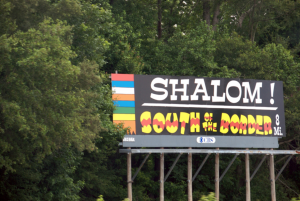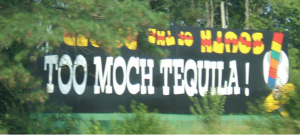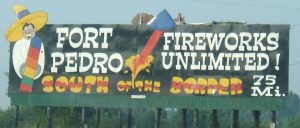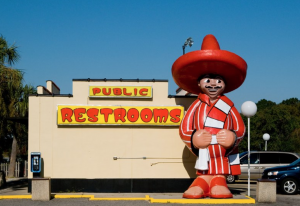South of the Border
I am extremely interested in the commercialization of hispanic culture. When driving up to Dartmouth this year I saw several posters in South Carolina that referred to going "South of the border". My dad said he remembered seeing these signs when he was driving to college and was always simultaneously amused and confused by them.
South of the border is a pit stop for travelers to take along their highway journeys. Posters refer to "Pedro" who wants you to go "South of the border" between the Carolinas. It talks of tacos and tequila and is advertised a fun getaway for travelers. This particular spectacle commercializes hispanic culture and border crossing culture. This attraction is so inherently offensive in my opinion that I am shocked at its continued existence.
South of the border began in 1949 by Mr. Alan Schafer. It was originally a beer stand called South of the Border Beer Depot. It was between North Carolina counties which did not have alcoholic beverages, causing business to boom. Eventually it became the South of the Border Drive-In.
Mr. Schafer designed the signs himself. There are 175 of them north and south from the Virginia/North Carolina state lines to the South Carolina/Georgia state lines.
South of the Border has become a multi-million dollar a year business.
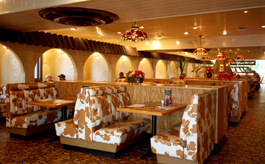
South of the Border features six restaurants such as "Pedro's Sombrero Restaurant" and "Pedro's Ice Cream Fiesta". These restaurants serve americanized versions of "Mexican food" and exploit the Mexican culture and language. This is a photo of the Sombrero restaurant which is on the spot of the original drive-in.
This billboard makes a pun on both Jewish and Spanish culture and language. I am curious whether the intent of this poster is attracting people of different cultures, or simply to make an amusing pun at the expense of others.
The billboards as well as the attractions make constant reference to tequila and tequila drinking Mexicans and Mexican activities.
There are photos and statues of stereotypically looking Mexican men all around the attraction.
